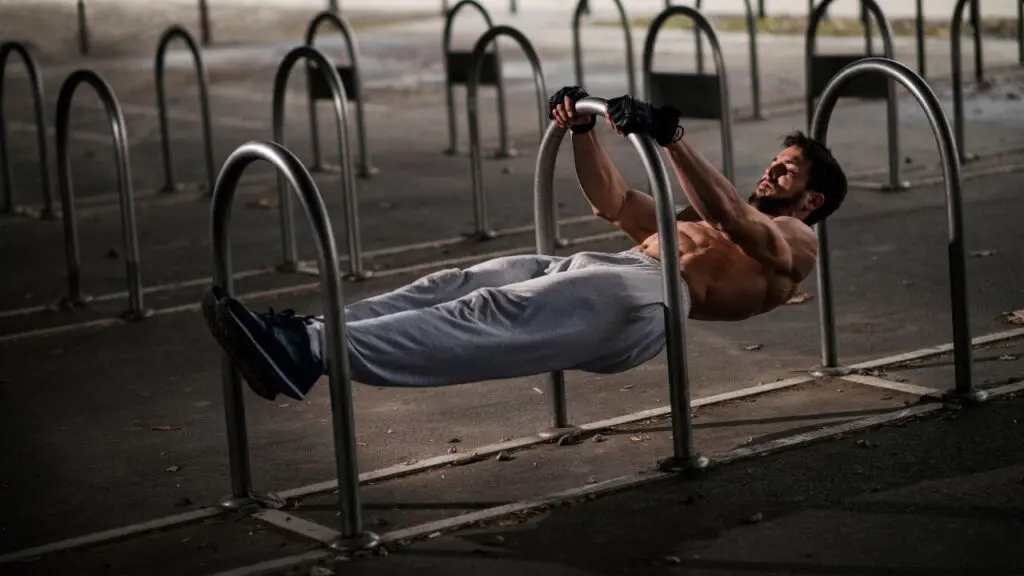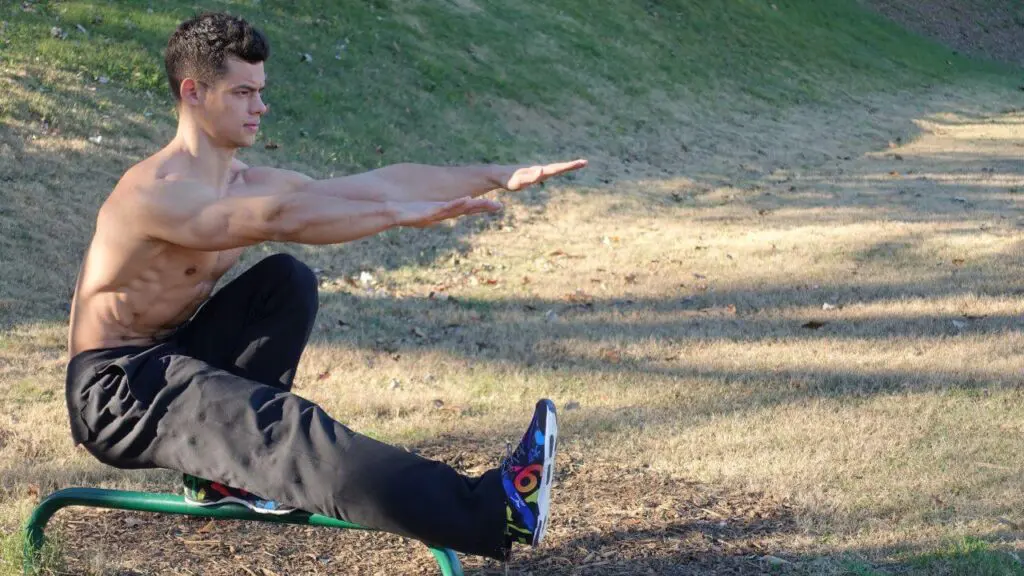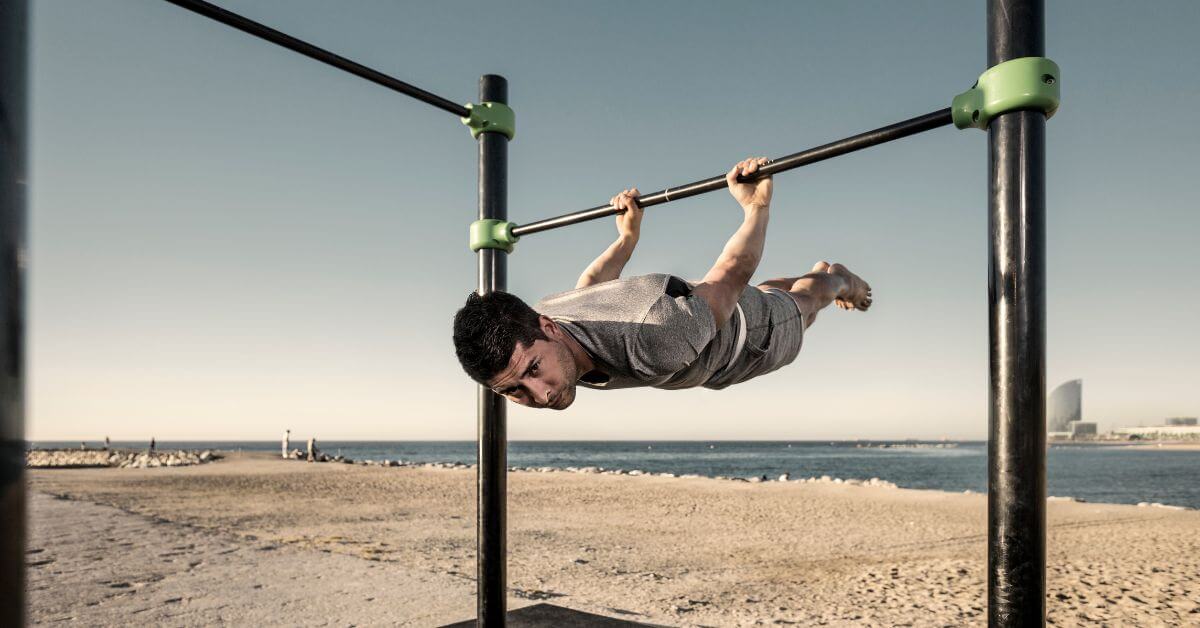Functional training is mainly based on movement patterns and gives more significance to compound, multi-joint exercises, while calisthenics does the same but focuses solely on bodyweight exercises, creating a form of functional calisthenics.
Table of Contents
ToggleHowever, are all calisthenics exercises part of regular functional training?
Keep reading to find out.
Is Calisthenics Functional Training?
Calisthenics is a form of functional training. It is the ultimate kind of functional training because it directly enhances your everyday life tasks, improves your posture, joints, and connective tissue, and helps build calisthenics functional strength and muscle mass. This makes it a perfect example of calisthenics in motion.
Start Building Your Dream Body Today
Ready to elevate your fitness game without falling into the trap of dull, repetitive routines that just don’t deliver? Imagine sculpting your ideal physique and boosting your health, all while still enjoying life’s pleasures, like those irresistible weekend getaways and your aunt’s legendary cheesecake. With our online fitness and nutrition coaching service, you don’t have to compromise. Dive into a personalized fitness journey that blends perfectly with your lifestyle, not against it. Book your completely free discovery consultation today, and take the first step towards a transformation that doesn’t require giving up the joys of life.

“I was skeptical about online fitness coaching, but Functional Body Savage completely changed my perspective. Vanja and Radomir’s personalized approach and attention to detail have helped me achieve goals I never thought possible. I’m stronger, more confident, and grateful for their guidance.”
Emily Thompson, San Francisco, CA
Learn More About Our Online Coaching ServiceQuick Summary
- Calisthenics is a type of training that primarily focuses on bodyweight resistance training.
- Bodyweight exercises are excellent for building relative strength without doing any weight training.
- Calisthenics workouts will build strength through the full range of motion, reduce the chances of injury, and support muscle growth.

Man performs a front lever, one of the hardest bodyweight calisthenics exercises.
What Is Calisthenics?
Calisthenics is a type of strength training that mainly focuses on bodyweight exercises. When considering calisthenics vs functional training, it’s clear that calisthenics offers a practical approach to functional strength.
Some of the most incorporated bodyweight exercises include push-ups, pull-ups, bodyweight rows, handstand push-ups, squats, lunges, planks, and similar.
Calisthenics is an excellent form of training for muscular endurance and building relative strength, which is strength compared to your body weight. When discussing functional training vs calisthenics, one primary deficiency of calisthenics training is the inability to increase weight resistance, which can be compensated by doing large sets and reps with minimal rest.
How Functional Is Calisthenics?
Calisthenics is highly functional. Lower and upper body bodyweight exercises are one of the best ways to build relative strength, emphasizing full range of motion (ROM) and learning to control your body and use stabilizer muscles properly. This brings us to the question: is calisthenics functional strength training? The answer is a resounding yes.
In addition, both functional training and calisthenics use multiple planes of motion(sagittal, frontal, and transverse) and incorporate real-life movements, which are excellent for all types of people.
So, the similarities between both forms of training are:
- Functional crossover to real-life situations
- Emphasis on the full range of motion
- Building relative strength and muscle mass
- Exercising in multiple planes of motion
- Building a more symmetrical and balanced body
- Injury prevention/reduction
This raises the debate: are calisthenics more functional than weightlifting? While calisthenics emphasize body control and stabilizer muscle use, weightlifting allows for targeted muscle isolation and increased resistance.
“If you cannot perform body-weight exercises such as push-ups and chin-ups, then you are not functionally strong and may be more likely to be injured.” – Michael Boyle, Strength and Conditioning and Strength Training Consultant
Calisthenics is Highly Functional, Says Expert
In a YouTube video, Adam Sinicki, a certified personal trainer and founder of The Bioneer YouTube channel, breaks down why calisthenics is one of the most functional forms of training:
“The fact that you’re working out with your own body weight is a massive bonus in terms of functional performance because it means your strength is always going to be relative to your weight. That means you’re going to stay light and explosive, enabling you to jump higher, run faster, and pull yourself up. Calisthenics builds incredible proprioception and strengthens muscles you might not otherwise consider. This kind of body awareness benefits you in every walk of life and physical activity.”
6 Benefits of Calisthenics Workouts and Bodyweight Exercises
There are numerous benefits to calisthenics workouts. Below you can find some of the most important ones.
1. Bodyweight Training Makes You More Functional
Calisthenics is all about learning to move your body in space; therefore, it’s the ultimate form of functional training. When comparing calisthenics vs functional training, bodyweight exercises directly enhance your daily life tasks, improve your overall strength, and make you leaner.
2. Builds Strength Through Bodyweight Resistance Training
Most people believe you can only build lower and upper body strength using fitness equipment such as barbells, dumbbells, and kettlebells.
However, that isn’t how it is. Bodyweight training can build as much muscular strength as the regular weight-lifting program. However, the main difference is that you can easily isolate muscles with machines and free weights, which only add a little to the whole body’s strength.
Lastly, you can add more resistance with regular lifting training, but calisthenics movements are as useful before achieving the plateau of maximal strength relative to your body.
3. Helps You Maintain Proper Form
If you do the same bodyweight exercise repeatedly, you only need to learn the proper form once. However, if you continually add more resistance to your exercises, like in regular lifting programs, form worsens if you add too much weight. This highlights the benefit of functional training calisthenics, where the focus on bodyweight helps maintain proper form over time.
This is why calisthenics workouts are one of the best sustainable training methods for maintaining proper form over more extended periods, making it harder to get injured.
4. Works The Whole Body Using Only Your Body Weight
Calisthenics is based on total body movements, just like functional training is. It involves larger muscle groups, a full range of motion at joints, and mimics real-life movements.
It also makes you perform exercises in multiple planes of motion, which forces your body to activate even more muscle units.
5. Improves Function of Connective Tissue And Joints
Calisthenics is the best form of training for developing strength and size in proportion to your locomotor system (muscles, joints, and bones). This aspect of functional calisthenics ensures that your entire body works harmoniously, reducing the risk of injury.
6. Improves Brain-Body Connection
Calisthenics is an excellent type of training for developing fine motor skills. It will require your brain to work as hard as your body.
You can develop anything from speed, power, coordination, and strength with a regular calisthenics workout.

Consider reading:
FAQs
Are Calisthenics More Functional Than Weight Lifting?
Yes, calisthenics are more functional than weight lifting. However, with the principles of functional training and movement patterns, you can make a weight-lifting session as functional as calisthenics bodyweight movements. This answers the question: what types of exercises can be performed without equipment (calisthenics), with equipment (weight machines), and are excellent for building strength through a joint’s range of motion?
Does Calisthenics Build Functional Strength?
Yes, calisthenics builds functional strength. Bodyweight exercises like push-ups, rows, pull-ups, handstand push-ups, squats, lunges, and bodyweight single-leg deadlifts are excellent exercises for developing functional strength.
Is Calisthenics Enough to Build Muscle?
Yes, calisthenics is enough to build muscle. However, if you want to get as lean and muscular as possible while maintaining joint mobility, you need to start functional strength training with weights.
Is Calisthenics Training Enough for Building a Functional Body?
Calisthenics is an excellent form of functional training which aims to develop relative strength through bodyweight exercises and with as little equipment as possible.
It is one of the best training forms for developing strength through a full range of motion and according to your locomotor system.
Let us know in the comments below how you incorporate calisthenics into your regular workouts.
Start Building Your Dream Body Today
Ready to elevate your fitness game without falling into the trap of dull, repetitive routines that just don’t deliver? Imagine sculpting your ideal physique and boosting your health, all while still enjoying life’s pleasures, like those irresistible weekend getaways and your aunt’s legendary cheesecake. With our online fitness and nutrition coaching service, you don’t have to compromise. Dive into a personalized fitness journey that blends perfectly with your lifestyle, not against it. Book your completely free discovery consultation today, and take the first step towards a transformation that doesn’t require giving up the joys of life.

“I was skeptical about online fitness coaching, but Functional Body Savage completely changed my perspective. Vanja and Radomir’s personalized approach and attention to detail have helped me achieve goals I never thought possible. I’m stronger, more confident, and grateful for their guidance.”
Emily Thompson, San Francisco, CA
Learn More About Our Online Coaching Service




